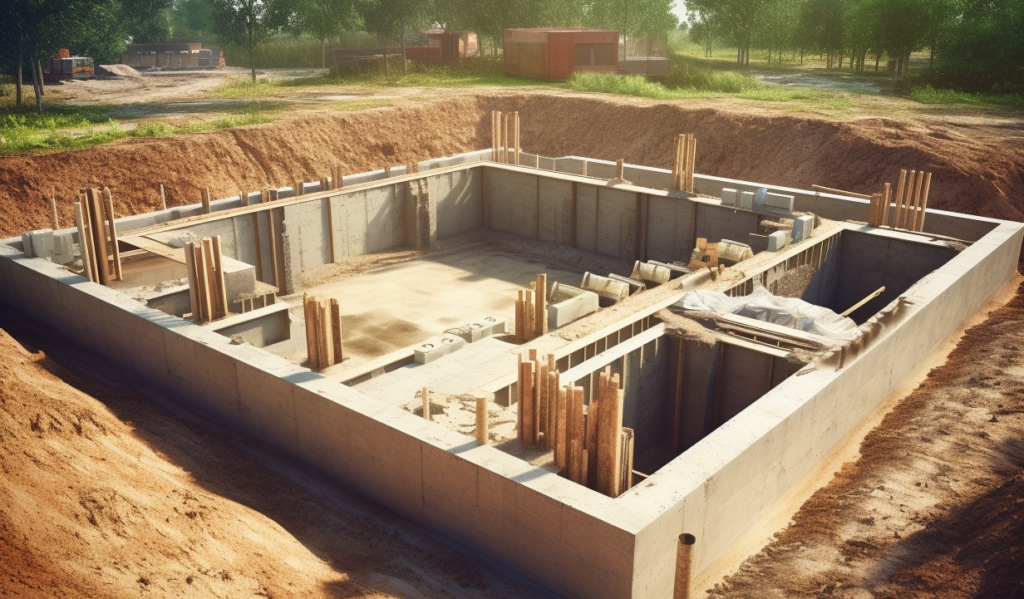In the dynamic field of construction management, understanding and adapting to seasonal variations is crucial.
The changing seasons bring distinct challenges and opportunities, necessitating a strategic approach to scheduling and executing construction tasks.
Seasonal planning not only affects the efficiency and safety of construction projects but also impacts the overall budget and timeline.
Recognizing these factors is key to successful project management in an industry heavily influenced by environmental conditions.
Seasonal Challenges in Construction

Summer
Summer, characterized by longer daylight hours and warmer temperatures, is often considered ideal for construction. However, it also brings heat-related challenges and the potential for sudden storms.
Extreme heat can lead to health risks for workers, and stormy weather can cause unexpected delays. Proactive planning, like scheduling heavy labor in the morning and late afternoon, can help mitigate these issues.
Autumn
As daylight decreases and weather becomes unpredictable in autumn, construction managers must prepare for the impending winter. This includes accelerating critical outdoor tasks and ensuring materials and equipment are winter-ready.
Autumn is also a time for assessing the progress made during the warmer months and planning for the indoor activities during the colder season. Early procurement of materials can prevent delays due to winter shortages.
Winter
Winter poses significant challenges with freezing temperatures, snow, ice, and limited daylight. Projects may face delays due to weather conditions, necessitating a well-thought-out winter contingency plan.
Emphasis is placed on indoor activities, and winter-specific safety measures for workers are paramount. During this period, focusing on planning and designing upcoming projects can also be beneficial. Utilizing heated tents and temporary enclosures can allow some outdoor work to continue.
Spring
Spring’s unpredictable weather, with potential rain and flooding, alongside thawing ground conditions, can hinder construction activities. It’s a season of transition, requiring flexibility in scheduling and readiness for sudden weather changes.
This period is ideal for starting new projects, as the ground thaws and becomes workable. Preventative measures against flooding and water damage should also be a priority during this season.
Adapting Construction Schedules to Seasons
Strategic Scheduling
Aligning major construction tasks with the most suitable seasons is key. For instance, laying foundations and other groundworks are often best scheduled for dryer months, while interior works can be reserved for colder or wetter seasons.
This approach helps in minimizing weather-related delays and capitalizing on the conditions best suited for specific tasks. Additionally, it allows for more accurate budgeting and resource allocation.
BuilderPad helps you create detailed schedules to keep everyone updated and how seasonality may effect your project plans:

Utilizing Daylight and Temperature
Adapting work hours to maximize daylight use and minimize exposure to extreme temperatures helps maintain productivity and worker safety.
This can include starting the workday earlier in the summer to avoid the afternoon heat, or later in the winter to make use of the limited daylight. Effective use of artificial lighting can also extend productive hours during shorter days.
Material Availability and Pricing
Seasonal variations can affect the availability and cost of materials. Forward planning and early procurement can mitigate these fluctuations.
Seasonal sales and bulk purchasing can be leveraged for cost savings, while long-term storage solutions can be arranged for materials bought in advance. Flexibility in material choices can also help navigate seasonal shortages.
Technological and Material Innovations

Weather-Resistant Building Techniques
Advancements in construction materials, such as weather-resistant concrete and insulating materials, allow for more flexibility in building throughout the year.
These materials can withstand harsh conditions, reducing the need for repairs and maintenance. Innovations in construction techniques, such as modular building, can also speed up the construction process in less favorable seasons.
Technology in Forecasting and Planning
Modern technology, including weather forecasting tools and construction management software, aids in anticipating weather-related disruptions and adjusting schedules accordingly.
These tools enable real-time decision-making, enhancing the ability to respond quickly to changing conditions. Integrating these technologies into everyday practices can significantly reduce the risks associated with seasonal constraints.
Health and Safety Considerations

Safety in Extreme Conditions
Implementing rigorous health and safety protocols is crucial, especially in extreme weather. This includes heat stress prevention in summer and cold stress avoidance in winter.
Regular training sessions and safety drills can help prepare the workforce for these conditions. Providing appropriate gear and ensuring regular breaks can also mitigate health risks.
Emergency Protocols
Preparation for weather-related emergencies, through training and well-defined emergency protocols, is essential for worker safety and project continuity.
This includes establishing clear communication channels and emergency response plans. Regularly updating these protocols and conducting drills can ensure that everyone on-site is prepared for potential emergencies.
Case Studies and Best Practices
Learning from Experience
Case studies highlighting how specific projects successfully navigated seasonal constraints can provide valuable insights. These examples can illustrate effective strategies and innovative solutions to common seasonal challenges.
Analyzing both successes and challenges faced in these cases can offer a wealth of practical knowledge. Engaging with these narratives promotes a culture of continuous learning and improvement in the construction industry.
Expert Advice
Incorporating tips and advice from industry experts can offer readers practical knowledge and best practices for managing seasonal variations in construction.
Engaging with experienced professionals can provide a diverse range of perspectives and solutions.
Networking with peers and attending industry events can also be invaluable for staying updated on the latest trends and practices.
Conclusion
Understanding and effectively working within seasonal constraints are critical for the timely and successful completion of construction projects.
Proactive and flexible planning, coupled with a keen awareness of seasonal impacts, can significantly enhance project outcomes.
Embracing these challenges as opportunities for innovation and improvement can lead to more efficient and resilient construction practices.
Takeaways
- Strategic scheduling of major construction tasks during the most suitable seasons is crucial for minimizing delays and capitalizing on favorable conditions.
- Adapting work hours and using lighting effectively can help maximize productivity in seasons with shorter daylight.
- Advance planning for material procurement and storage is essential to navigate fluctuations in availability and pricing.
- Technological innovations like weather forecasting tools and weather-resistant materials allow for greater flexibility across seasons.
- Worker health and safety must be a top priority through protocols for extreme conditions, emergency plans, and regular training.







